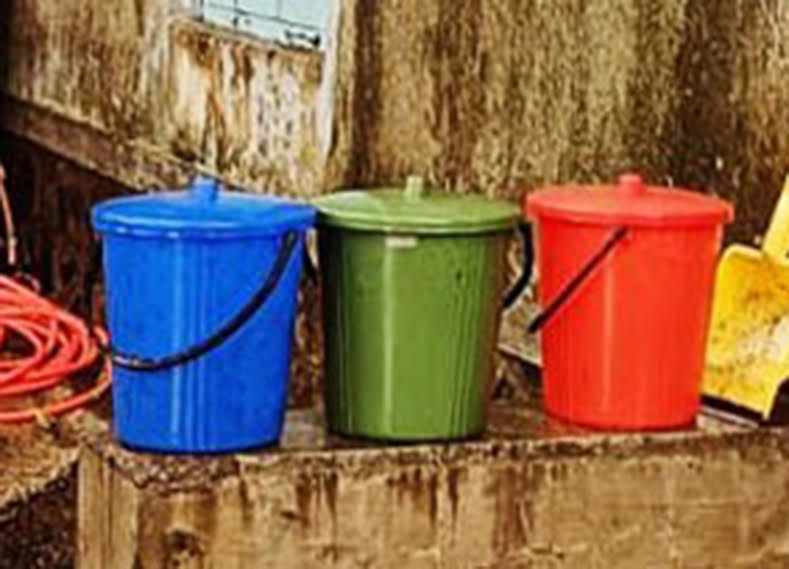
Growing up in the 80s in India, I found myself surrounded with messaging about “Small family, Happy family”, “Hum do, Hamare do”….and yet around me there existed families having the Government defying third child, with the child made to feel as if it was brought forth more as an afterthought. The story of the third bin, the Red Bin, is similar to that of the third child. One whose very existence is questioned at first, and who eventually becomes an integral, essential and dear member of the family, treated with love equal to the older siblings by the parents.
When Saahas started its Alag Karo project in Gurugram in early 2017, the tag line “Har Din Teen Bin” was chosen with a lot of thought, to emphasise 3-way segregation of waste mandated by the Solid Waste Management Rules 2016. Cities like Bangalore had already shown the way, practicing 3-way segregation at large scale, it was high time that the rest of the country also adopted it. Coincidently, in June 2017, the nation celebrated the World Environment Day with a focus on source segregation. And, to our surprise and dismay, the entire government machinery was promoting 2-way segregation, led by Swachh Bharat mission. Nation was bombarded with messaging about Green and Blue bins from all sides. There were posters of celebrities endorsing segregation into Geela Kachra, Sookha Kachra, videos over WhatsApp with endearing kids talking about benefits of 2-way segregation!!! Our campaign of 3-way segregation was being questioned. Gharelu hanikarak kachra??? Wo kya hota hai? Naam hi itna complicated hai, wet and dry are so simple.
We took solace in the fact that the country was at least waking up to the issue of source segregation and it was becoming mainstream. We continued our messaging and implementation with 3-way segregation into green, blue and red bins for bio-degradable, non-biodegradable and domestic hazardous waste. This however, proved challenging as at every step, we had to justify the NEED for the third bin. The arguments thrown at us were many: Swachh Bharat Mission is distributing Green-Blue bins only, not Red; where will people find space for the third bin; do hi mushkil se hota hai, teen kahan se hoga etc. etc……We even had to give written justification to the Municipal Corporation of Gurugram on the need for the third bin. I’m sure the third child didn’t have to struggle so much to justify her existence (yes, “her” has been used consciously and is not a slip).
But with COVID-19, the Red Bin has found its raison d'être. Aptly called Domestic Hazardous Waste, the contents of the Red Bin prevent the contamination of the contents from Green and Blue bins, thus keeping them safe for waste handlers and enabling further processing and recovery. The bio-medical waste generated at homes is potentially harmful if left exposed and can lead to contamination of other waste categories if mixed with them. Sharp items like broken glass, needles etc. can be safely disposed in the Red Bin knowing that they will not be manually touched by the waste handlers. Soggy, oily tissue, waste from floor sweeping etc. which can ruin the compost or the dry waste, can safely go here. Sanitary pads and diapers which women and young parents hesitatingly drop into the dry waste bin can be put here without any hassles. Of course, all of these must be wrapped in old newspapers. AND USED MASKS IN THE TIMES OF CORONA, GO INTO THE RED BIN. This prevents them from coming in contact with waste handlers and ensures safe disposal. Hopefully, we will no longer have to go on convincing everyone about the tag line, Har Din Teen Bin. Let this be the new mantra for source segregation in India.
Remember, when it comes to source segregation it is not “Hum Do Hamare Do” or “Mere Do Anmol Ratan” but “HAR DIN TEEN BIN”.
